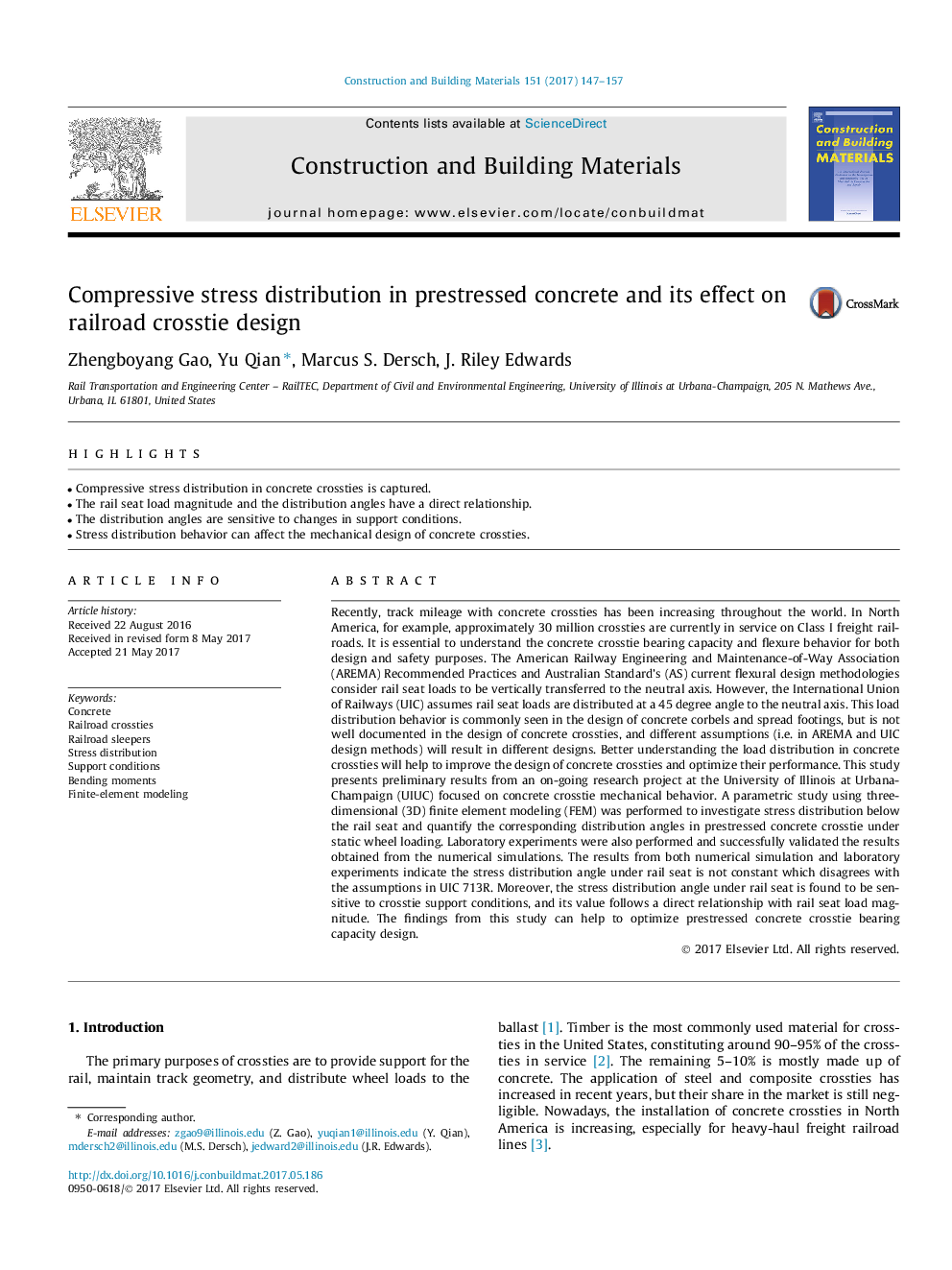| کد مقاله | کد نشریه | سال انتشار | مقاله انگلیسی | نسخه تمام متن |
|---|---|---|---|---|
| 4918171 | 1428755 | 2017 | 11 صفحه PDF | دانلود رایگان |
عنوان انگلیسی مقاله ISI
Compressive stress distribution in prestressed concrete and its effect on railroad crosstie design
ترجمه فارسی عنوان
توزیع تنش فشاری در بتن پیش¬رسید شده و تاثیر آن در طراحی کروستی ریلی
دانلود مقاله + سفارش ترجمه
دانلود مقاله ISI انگلیسی
رایگان برای ایرانیان
کلمات کلیدی
بتن، سواری راه آهن، پناهگاه راه آهن، توزیع استرس، شرایط پشتیبانی، خم شدن لحظات، مدل سازی محدود عنصر
موضوعات مرتبط
مهندسی و علوم پایه
سایر رشته های مهندسی
مهندسی عمران و سازه
چکیده انگلیسی
Recently, track mileage with concrete crossties has been increasing throughout the world. In North America, for example, approximately 30 million crossties are currently in service on Class I freight railroads. It is essential to understand the concrete crosstie bearing capacity and flexure behavior for both design and safety purposes. The American Railway Engineering and Maintenance-of-Way Association (AREMA) Recommended Practices and Australian Standard's (AS) current flexural design methodologies consider rail seat loads to be vertically transferred to the neutral axis. However, the International Union of Railways (UIC) assumes rail seat loads are distributed at a 45 degree angle to the neutral axis. This load distribution behavior is commonly seen in the design of concrete corbels and spread footings, but is not well documented in the design of concrete crossties, and different assumptions (i.e. in AREMA and UIC design methods) will result in different designs. Better understanding the load distribution in concrete crossties will help to improve the design of concrete crossties and optimize their performance. This study presents preliminary results from an on-going research project at the University of Illinois at Urbana-Champaign (UIUC) focused on concrete crosstie mechanical behavior. A parametric study using three-dimensional (3D) finite element modeling (FEM) was performed to investigate stress distribution below the rail seat and quantify the corresponding distribution angles in prestressed concrete crosstie under static wheel loading. Laboratory experiments were also performed and successfully validated the results obtained from the numerical simulations. The results from both numerical simulation and laboratory experiments indicate the stress distribution angle under rail seat is not constant which disagrees with the assumptions in UIC 713R. Moreover, the stress distribution angle under rail seat is found to be sensitive to crosstie support conditions, and its value follows a direct relationship with rail seat load magnitude. The findings from this study can help to optimize prestressed concrete crosstie bearing capacity design.
ناشر
Database: Elsevier - ScienceDirect (ساینس دایرکت)
Journal: Construction and Building Materials - Volume 151, 1 October 2017, Pages 147-157
Journal: Construction and Building Materials - Volume 151, 1 October 2017, Pages 147-157
نویسندگان
Zhengboyang Gao, Yu Qian, Marcus S. Dersch, J. Riley Edwards,
